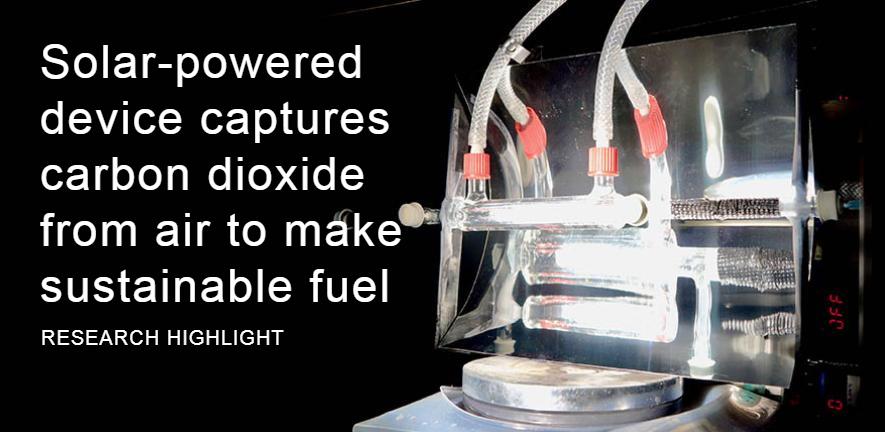
Researchers have developed a reactor that pulls carbon dioxide directly from the air and converts it into sustainable fuel, using sunlight as the power source. The researchers, from the University of Cambridge, say their solar-powered reactor could be used to make fuel to power cars and planes, or the many chemicals and pharmaceuticals products we rely on. It could also be used to generate fuel in remote or off-grid locations.
Unlike most carbon capture technologies, the reactor developed by the Cambridge researchers does not require fossil-fuel-based power, or the transport and storage of carbon dioxide, but instead converts atmospheric CO2 into something useful using sunlight. Carbon Capture and Storage (CCS) has been touted as a possible solution to the climate crisis, and has recently received £22bn in funding from the UK government. However, CCS is energy-intensive and there are concerns about the long-term safety of storing pressurised CO2 deep underground, although safety studies are currently being carried out.
"Aside from the expense and the energy intensity, CCS provides an excuse to carry on burning fossil fuels, which is what caused the climate crisis in the first place. CCS is also a non-circular process, since the pressurised CO2 is, at best, stored underground indefinitely, where it’s of no use to anyone,” Professor Erwin Reisner, research lead, Yusuf Hamied Department of Chemistry
The focus of Reisner’s research group is the development of devices that convert waste, water and air into practical fuels and chemicals. These devices take their inspiration from photosynthesis: the process by which plants convert sunlight into food. The devices don’t use any outside power: no cables, no batteries – all they need is the power of the sun. The team’s newest system takes CO2 directly from the air and converts it into syngas: a key intermediate in the production of many chemicals and pharmaceuticals. The researchers say their approach, which does not require any transportation or storage, is much easier to scale up than earlier solar-powered devices.
Read the full University of Cambridge article
Publication: Sayan Kar et al. ‘Direct air capture of CO2 for solar fuels production in flow.’ Nature Energy (2025). DOI: 10.1038/s41560-025-01714-y
Image credit: Solar-powered flow reactor, Sayan Kar

